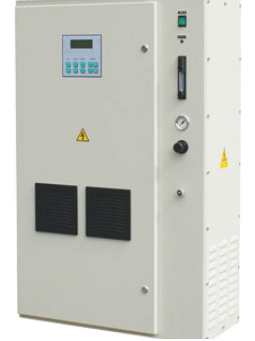


Ozone (the blue gas) is a form of oxygen (O2) with the molecular formula O3. It forms when oxygen in the air is exposed to the discharge of a powerful electric current through air. In nature, it forms in the upper atmosphere when lightning passes through the air. The pungent odor often associated with passage of a thunderstorm, which leads some to exclaim how “clean” the atmosphere smells, is attributed to naturally formed ozone. Ozone is unstable and changes to O2 shortly after its formation. It is a powerful oxidant and one of the most powerful disinfectants available in water treatment. Ozone is significantly more effective than chlorine at inactivating and / or killing viruses, bacteria and cysts and has been widely used in Europe for many years to treat municipal drinking water and in almost all water bottling plants.
Since ozone quickly converts to oxygen and leaves no toxic residual, it may be more advantageous than chlorine to treat wastewater prior to discharge. Since dissolved ozone reverts to oxygen, the effluent will exert less biological oxygen demand (BOD) on the receiving stream. Ozone’s effectiveness as an oxidant often makes it the method of choice for removing color, organic chemicals and odor-causing contaminants in wastewater. In many cases, depending on the ozone contact time and concentration, it can oxidize these contaminants to water and carbon dioxide.
